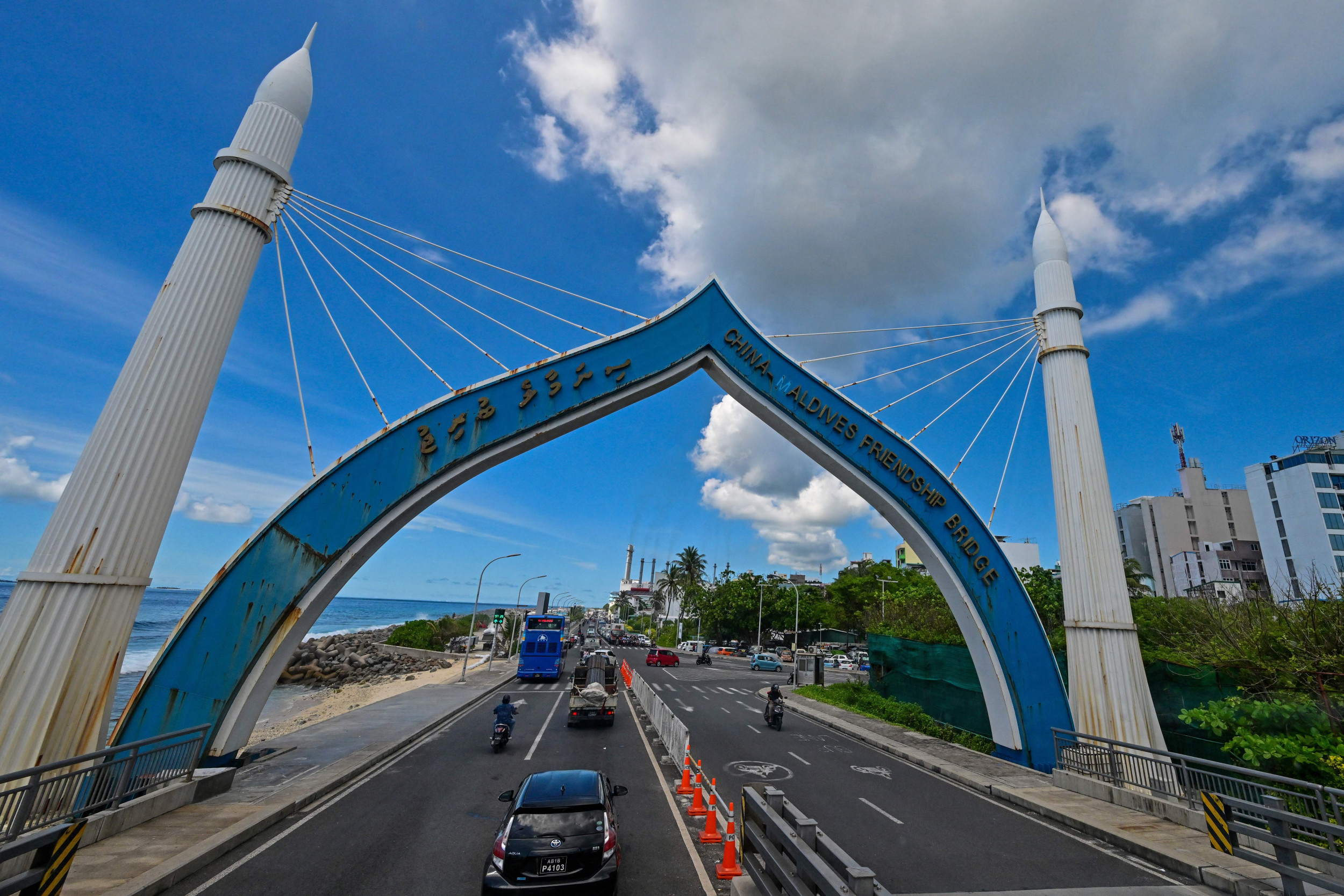The Maldives has joined the ranks of India’s neighboring countries facing rising international debt, much of it overshadowed by loans from China.
Chinese companies have developed significant infrastructure in South Asia, constructing vital bridges, airports, and ports. Countries like Pakistan, Sri Lanka, and Bangladesh are currently struggling with the repayment of loans tied to these large projects, including a major bridge that connects the Maldivian capital, Male, to its airport.
This situation has sparked accusations of “debt-trap diplomacy,” a term popularized during Donald Trump’s tenure. This theory suggests that China lends money to financially vulnerable nations, anticipating their inability to repay and thereby gaining control over important assets. However, China has repeatedly dismissed these claims.

Ishara Kodikara/AFP via Getty Images
Sri Lanka provides a notable example, having defaulted on its external debt and declaring bankruptcy in 2022 due to high debt levels, the pandemic’s fallout, and inflation. This year, the nation reached an agreement with China’s Export-Import Bank to restructure $4.2 billion of its debt, with over half of its bilateral debt owed to China.
As for the Maldives, it owes China a staggering $1.37 billion, making it the largest creditor to the island nation. As of 2023, the Maldives’ public debt reached 122.9 percent of its GDP, totaling around $8 billion. Saudi Arabia and India, while significant creditors, still trail far behind China.
The Maldives has even turned to Bangladesh for support, securing a $200 million loan to help bolster its economy.
Newly elected President Mohamed Muizzu, who took office in November, is under fire for his economic strategies. Critics claim that his government has not effectively navigated the country toward recovery. Muizzu’s visit to Beijing earlier this year reflected a new pro-China stance aimed at renegotiating existing loan terms.
Given its strategic position in the Indian Ocean, crucial for 80 percent of global trade, the Maldives plays a significant role in regional geopolitics. Muizzu is optimistic about fostering relations with China through the Belt and Road Initiative, potentially leading to increased Chinese investment in Maldivian infrastructure.
Yet, the Maldivian economy is fragile. In June, Fitch Ratings downgraded its foreign-currency issuer default rating to CCC+ due to escalating external debt and difficulties in maintaining its currency peg to the U.S. dollar.
The International Monetary Fund has raised alarms, urging immediate policy reforms to tackle the fiscal deficit and high debt burden. It has been suggested that if China doesn’t agree to a debt restructuring plan, the Maldives should seek assistance from other nations.
Critics have also targeted Muizzu’s leadership, arguing that he has “failed to maintain an intelligent foreign policy,” and has appointed unqualified individuals to government roles, which undermines the execution of essential responsibilities.
While concerns about China’s influence in global lending persist, some experts push back against the “debt-trap diplomacy” narrative. In a 2021 piece for The Atlantic, Johns Hopkins University’s Deborah Brautigam and Harvard Business School’s Meg Rithmire contended that the theory oversimplifies the complexities of international finance. Their research indicated no evidence of China seizing assets from debtor nations and highlighted China’s willingness to restructure loans, as demonstrated in Sri Lanka’s case.
For instance, China provided debt extensions and grace periods, implying that it is adapting its strategies to mitigate the financial risks linked to international infrastructure ventures.
